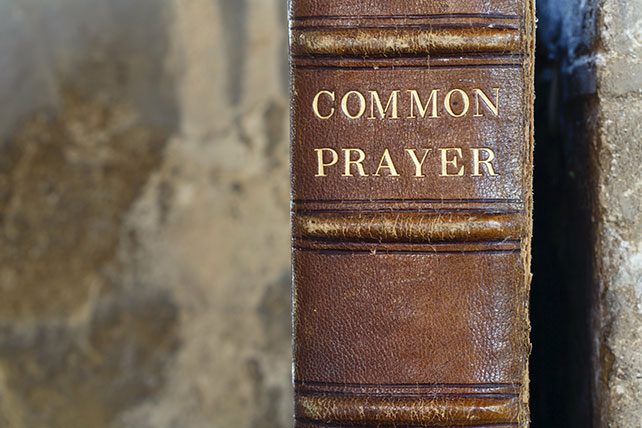It was not until Henry’s death in 1547 and the coronation of Edward VI (which occurred in the new king’s life somewhere between nappies and knickers) that the reform of the English church came into full flower. In January 1549, two short years after Henry’s death, a committee headed by Thomas Cranmer, the long-tenured Archbishop of Canterbury, compiled and presented a prayer book for approval by Church Convocation and Parliament. This first edition of the Book of Common Prayer would be greatly revised within three years (1552) and subsequently banned throughout the reign of “Bloody Mary” (1553-1558). But the influence of its structure and the power of its prose changed the church.
Catholic and Reformed
Although it might seem rude to discuss genealogy at a birthday party, Reformed and Lutheran Christians must remember that in many ways the Book of Common Prayer is partially our book too. Archbishop Cranmer was well versed in the progress of church reform on the continent. Throughout the 1520s and early 1530s he had traveled Europe in the service of Henry VIII. He came into contact with the teachings of the reformers, Luther and Calvin among them, and learned the politics of reform. In time, Cranmer was instrumental in bringing Lutheran, Calvinist, and Zwinglian scholars to university posts in England. The orders of worship, the postures and language of prayers, and the understanding of the sacraments contained within the 1549 prayer book reflect a complex synthesis of Reformed and Catholic theology and practice.
While much could be said about the structure, style, and influence of the Book of Common Prayer, perhaps most important for Christians in the Reformed tradition is the language of its prayers and the centrality it gives to the Lord’s Supper. To some extent, the prayer book maintained aspects of Calvin’s heritage for his direct descendants until we were ready to receive them.
The Language of Prayer
In the sixteenth century, the language of worship was a central concern. Worship in the language of the people was not a new debate in the 1500s, nor was it the initial point of contention for many of the reformers. But the translation of worship from Latin into German, French, English, and many other local languages quickly followed initial theological disputes. Each reformer had his poet. Cranmer was no exception (although his may have been a committee!). In any event, from the first edition in 1549, a mark of the Book of Common Prayer has been the beauty of the text.
Collects (brief prayers that collect the silent petitions of the worshipers at various points in the order of worship) have been a trademark of the Book of Common Prayer. Many of these have found their way into Reformed resources like the Book of Common Worship (PCUSA 1993). In the examples that follow, notice the use of words and images that make these prayers simple, elegant, and sincere. (Also see box p. 38.)
Prayer at the Close of Day
Keep watch, dear Lord,
with those who work or watch
or weep this night,
and give your angels charge over those who sleep.
Tend the sick, Lord Christ;
give rest to the weary,
bless the dying,
soothe the suffering,
pity the afflicted,
shield the joyous;
and all for your love’s sake. Amen.
A Prayer for the Sick
O God,
the strength of the weak and the comfort of sufferers,
mercifully hear our prayers
and grant to your servant [Name],
the help of your power,
that his/her sickness may be turned into health
and our sorrow into joy;
through Jesus Christ. Amen.

